 Improving and maintaining your balance is central to help prevent falls and avoid injury. There are many ways to enhance your current level of balance, whether it be getting your daily steps in by walking, taking weekly chair or standing yoga classes, or by strengthening your stability muscles to help keep your body standing strong. Balance is much more than simply standing on one leg. Consider this 3-step approach to improve your balance potential.
Improving and maintaining your balance is central to help prevent falls and avoid injury. There are many ways to enhance your current level of balance, whether it be getting your daily steps in by walking, taking weekly chair or standing yoga classes, or by strengthening your stability muscles to help keep your body standing strong. Balance is much more than simply standing on one leg. Consider this 3-step approach to improve your balance potential.
- One Foot in Front of the Other – In addition to a weekly walking goal, consider trying a balance class or dance fitness workout. Or maybe do a few daily exercises in your home, such as Tandem Arm Swings, where you place the heel of one foot against the toes of your other foot, then swing your arms next to your sides front to back. Have a sturdy chair within reach in case you need it. Do this 10 times then repeat on the opposite side at least once per day.
- Strong and Stable – Your leg, core, and arm muscles play a big role in maintaining stability. The stronger you are, the more confident you’ll be in keeping your feet on the ground. You might consider taking a strengthening class so a professional can help you learn great form. If you want a few things to try at home, consider these:
- A good exercise for stronger legs is a Sit-to-Stand. Sit at the edge of a stable chair with your arms across your chest; use the front of your legs to help you rise up; feel the chair lightly touching the back of your legs; and sit back down with control…don’t plop! Repeat for 60-seconds at your own pace.
- An upper body and core exercise to try is a modified plank against a wall. Place your hands slightly wider than your shoulders against the wall and step back about 1-2 feet. Keep your body as straight as a board while bending your arms and leaning your weight toward the wall. Hold for 10 seconds at a time and repeat 10 times.
- Stretched and Balanced – Your ability to move your body through a full range of motion helps you to maintain good posture and stability. For example, tight hips will cause your body to bend at the crease of your body where your legs meet your trunk and keep you from being able to completely stand upright. Try a seated or standing stretch or yoga class. For a simple hip stretch to do at home, stand next to a chair or counter, squeeze the muscles in your rear end as you push your hips slightly forward. An added benefit to this stretch is that it strengthens the rear of your body while you’re stretching the front. Hold for 10 seconds then repeat 3-4 times daily.
Balance improvements can be made by simple changes done consistently over time. It is not a quick process but if you set up daily and weekly goals of making exercise a habit, you will see positive changes over time. Moving, strengthening, and stretching is vital for maintaining your mobility.

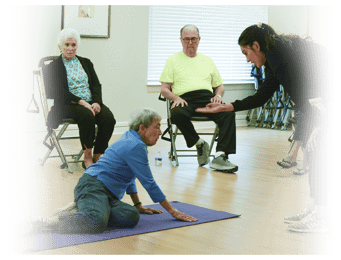 There are several health-related observances through the year and NIFS staff enjoy finding ways to use these to bring attention to important topics. One of those is Falls Prevention Week in September. As a fitness management provider for senior living communities, fall prevention is a hot topic so older adults can live vibrantly for as long as possible. But you might be wondering how can you make something that doesn’t sound so fun be engaging for residents? We have found that there is a love/hate relationship everyone has with any program labeled “Fall Prevention” because residents are certainly interested in learning about how to prevent falls but have a healthy fear of falling. What better way to face a fear than head on and in a practical way, right?
There are several health-related observances through the year and NIFS staff enjoy finding ways to use these to bring attention to important topics. One of those is Falls Prevention Week in September. As a fitness management provider for senior living communities, fall prevention is a hot topic so older adults can live vibrantly for as long as possible. But you might be wondering how can you make something that doesn’t sound so fun be engaging for residents? We have found that there is a love/hate relationship everyone has with any program labeled “Fall Prevention” because residents are certainly interested in learning about how to prevent falls but have a healthy fear of falling. What better way to face a fear than head on and in a practical way, right?
.jpg?width=477&height=318&name=GettyImages-1143018176%20(1).jpg) It isn’t a secret that as a person ages, there is an increased risk of falling. While there are a few different reasons this risk can increase, we will focus on what impacts a person’s ability to
It isn’t a secret that as a person ages, there is an increased risk of falling. While there are a few different reasons this risk can increase, we will focus on what impacts a person’s ability to 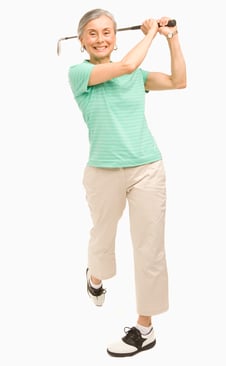 Most folks who have ever participated in balance training know that most exercises seem to involve only the legs. While it is important to focus on our lower extremities during our training, it is important to incorporate the use of our arms for more functional and effective training. Why? Because this will have more real-world applications! For example, practicing single leg stance is important for improving balance but most of us are not going to be in a situation where we must stand on one leg for an extended period of time. We will, however, be shifting our weight from one leg to another, swinging our arms like we do when walking, taking the stairs, dancing, or cleaning the house in real world daily activities.
Most folks who have ever participated in balance training know that most exercises seem to involve only the legs. While it is important to focus on our lower extremities during our training, it is important to incorporate the use of our arms for more functional and effective training. Why? Because this will have more real-world applications! For example, practicing single leg stance is important for improving balance but most of us are not going to be in a situation where we must stand on one leg for an extended period of time. We will, however, be shifting our weight from one leg to another, swinging our arms like we do when walking, taking the stairs, dancing, or cleaning the house in real world daily activities.
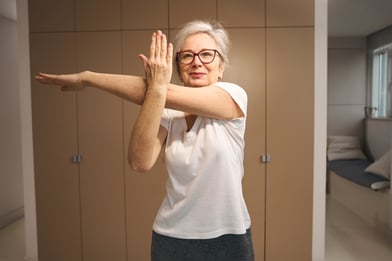 Anyone and everyone can benefit from having better balance. From professional athletes to the active aging population, balance plays a critical role in everyday life. Whether a professional gymnast is flipping on a beam, or a senior is simply trying to lower their risk of falling, improving balance starts with two things: identifying
Anyone and everyone can benefit from having better balance. From professional athletes to the active aging population, balance plays a critical role in everyday life. Whether a professional gymnast is flipping on a beam, or a senior is simply trying to lower their risk of falling, improving balance starts with two things: identifying 
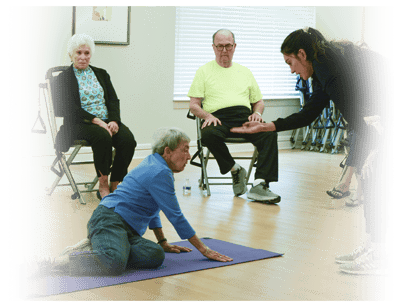 Fall prevention programs and services have been a cornerstone of
Fall prevention programs and services have been a cornerstone of 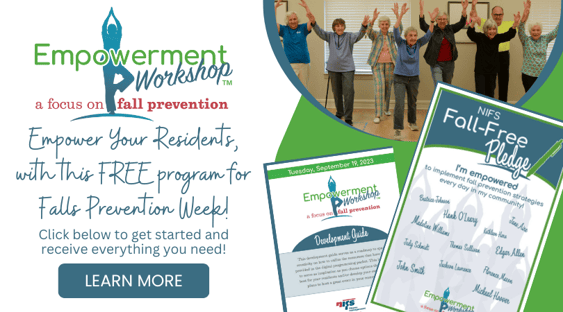
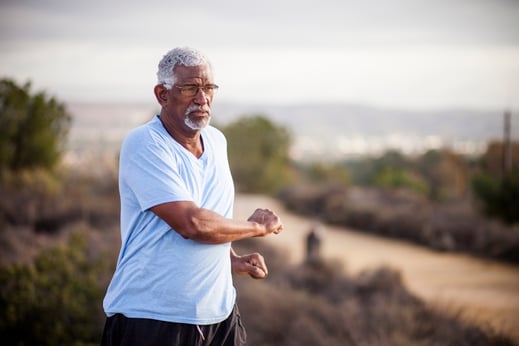 I have found appropriate strength training to make a huge difference improving balance. Several regular attendees of our group fitness classes have remarked that they feel more stable while walking, that they feel more confident getting out of chairs or off of the floor, and that they feel their hips and leg muscles working more to stabilize their body while standing or walking. This improves confidence and allows them to walk further, perform more advanced exercise, and remain more active in their daily lives. Strength can be a life saver! Check out these four tips for seniors to maintain and improve balance:
I have found appropriate strength training to make a huge difference improving balance. Several regular attendees of our group fitness classes have remarked that they feel more stable while walking, that they feel more confident getting out of chairs or off of the floor, and that they feel their hips and leg muscles working more to stabilize their body while standing or walking. This improves confidence and allows them to walk further, perform more advanced exercise, and remain more active in their daily lives. Strength can be a life saver! Check out these four tips for seniors to maintain and improve balance:
.jpg?width=300&name=GettyImages-1157822544%20(1).jpg) We hear a lot about stability, but how do you accurately incorporate it into a client’s program? Understanding how to incorporate stability training will help keep your clients functional, independent, and healthy regardless of age.
We hear a lot about stability, but how do you accurately incorporate it into a client’s program? Understanding how to incorporate stability training will help keep your clients functional, independent, and healthy regardless of age.
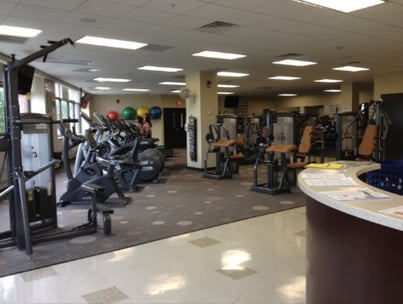 This has been the year of design and consulting work for senior living clients who are renovating or building new fitness centers. I think I could give you the dimensions of a NuStep T4r model in my sleep (they are 60 x 27 x 24 inches, by the way). It truly is exciting to see the industry dedicating resources to well-designed fitness spaces to support quality programs and services for residents.
This has been the year of design and consulting work for senior living clients who are renovating or building new fitness centers. I think I could give you the dimensions of a NuStep T4r model in my sleep (they are 60 x 27 x 24 inches, by the way). It truly is exciting to see the industry dedicating resources to well-designed fitness spaces to support quality programs and services for residents.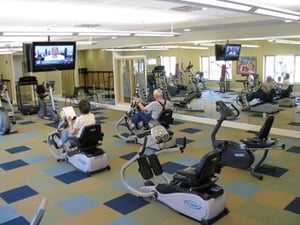 Televisions and entertainment: Determine whether you will pursue wall-mount televisions or the integrated console option on the cardio machines. With some equipment like NuSteps and rowers not having the integrated TV option, you will want a wall-mount TV somewhere in your facility. With wall-mount TVs you’ll have to navigate the channel wars for the lifelong battle between Fox News, CNN, and MSNBC, which individuals have VERY strong preferences for—imagine that! Consider an FM tuner option with headphones if needed, but we generally see residents politely following the first-come, first-served rule.
Televisions and entertainment: Determine whether you will pursue wall-mount televisions or the integrated console option on the cardio machines. With some equipment like NuSteps and rowers not having the integrated TV option, you will want a wall-mount TV somewhere in your facility. With wall-mount TVs you’ll have to navigate the channel wars for the lifelong battle between Fox News, CNN, and MSNBC, which individuals have VERY strong preferences for—imagine that! Consider an FM tuner option with headphones if needed, but we generally see residents politely following the first-come, first-served rule.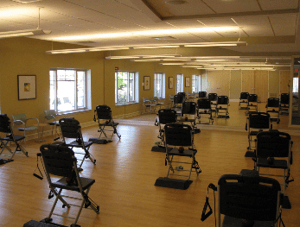 Exercise chairs: We are big fans of the
Exercise chairs: We are big fans of the 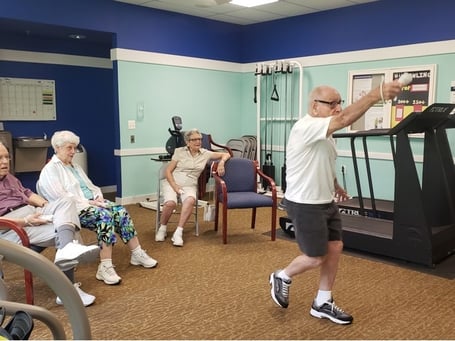 This summer, teams all around the country ironed their bowling shirts, warmed up their throwing arms, and double-checked their TV connections in preparation for the first-ever 10-week session of the NIFS Wii Bowling League.
This summer, teams all around the country ironed their bowling shirts, warmed up their throwing arms, and double-checked their TV connections in preparation for the first-ever 10-week session of the NIFS Wii Bowling League.